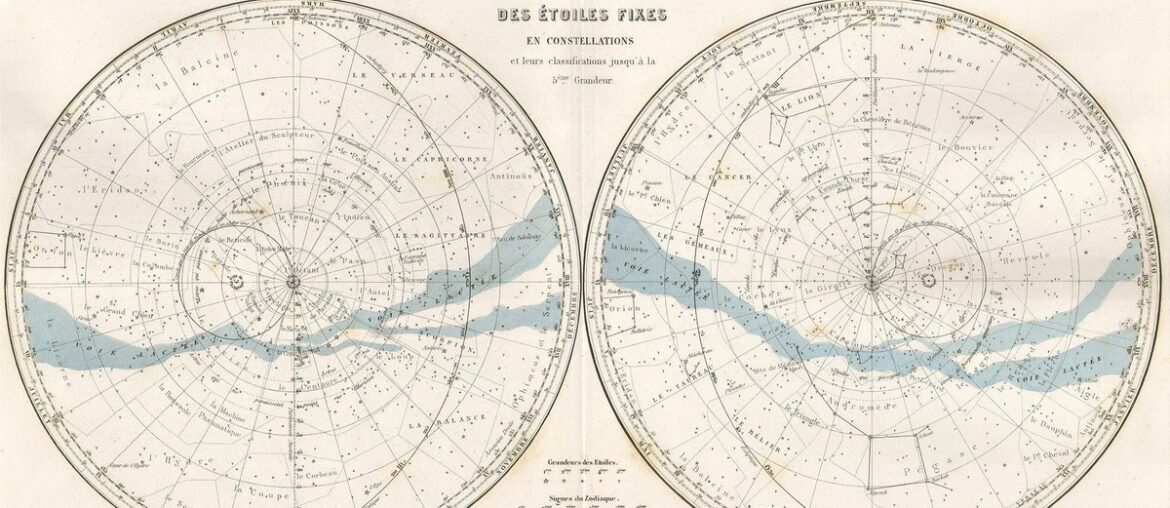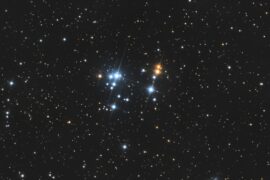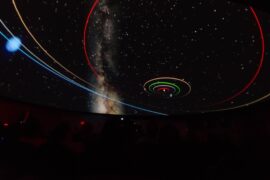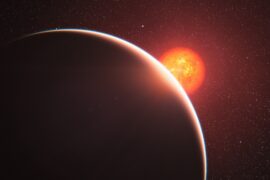Under clear skies near the poles, some stars never dip below the horizon and instead circle the celestial pole all night. Those steady points of light serve as convenient reference marks for navigation and for understanding how the sky looks from different latitudes.
There are 32 Circumpolar Stars, ranging from Achernar to Vega. For each star you’ll find below Constellation,Declination (°),Minimum latitude (°) so you can quickly see where each remains above the horizon depending on your location — you’ll find the full list below.
How can I tell if a star is circumpolar from my location?
A star is circumpolar if it never sets from your latitude; practically, compare its declination to your latitude. In the Northern Hemisphere a star with declination greater than (90° − your latitude) will stay above the horizon. Use the table’s “Minimum latitude (°)” column to see the lowest latitude at which each star stays circumpolar.
Do the circumpolar stars I see change with hemisphere or time?
Yes — which stars are circumpolar depends on your hemisphere and latitude: northern observers have a different set than southern observers. Over long timescales the sky shifts slowly (precession), so the exact list can change over centuries, but for everyday use the table below reflects current positions.
Circumpolar Stars
| Name | Constellation | Declination (°) | Minimum latitude (°) |
|---|---|---|---|
| Polaris | Ursa Minor | 89.26 | 0.7 |
| Kochab | Ursa Minor | 74.16 | 15.8 |
| Dubhe | Ursa Major | 61.75 | 28.3 |
| Merak | Ursa Major | 56.38 | 33.6 |
| Alioth | Ursa Major | 55.96 | 34.0 |
| Mizar | Ursa Major | 54.93 | 35.1 |
| Alkaid | Ursa Major | 49.31 | 40.7 |
| Caph | Cassiopeia | 59.15 | 30.8 |
| Schedar | Cassiopeia | 56.54 | 33.5 |
| Navi | Cassiopeia | 60.72 | 29.3 |
| Ruchbah | Cassiopeia | 60.24 | 29.8 |
| Alderamin | Cepheus | 62.59 | 27.4 |
| Errai | Cepheus | 64.52 | 25.5 |
| Thuban | Draco | 64.38 | 25.6 |
| Eltanin | Draco | 51.49 | 38.5 |
| Capella | Auriga | 46.00 | 44.0 |
| Vega | Lyra | 38.78 | 51.2 |
| Deneb | Cygnus | 45.28 | 44.7 |
| Sigma Octantis | Octans | -88.96 | -1.0 |
| Canopus | Carina | -52.69 | -37.3 |
| Alpha Centauri | Centaurus | -60.83 | -29.2 |
| Hadar | Centaurus | -60.37 | -29.6 |
| Acrux | Crux | -63.10 | -26.9 |
| Gacrux | Crux | -57.11 | -32.9 |
| Becrux | Crux | -59.69 | -30.3 |
| Miaplacidus | Carina | -69.72 | -20.3 |
| Avior | Carina | -59.52 | -30.5 |
| Achernar | Eridanus | -57.24 | -32.8 |
| Peacock | Pavo | -56.75 | -33.2 |
| Atria | Triangulum Australe | -69.03 | -21.0 |
| Alpha Tucanae | Tucana | -60.26 | -29.7 |
| Rigil Kentaurus | Centaurus | -60.83 | -29.2 |
Images and Descriptions

Polaris
The current North Star. With a magnitude of 2.0, this triple-star system appears stationary in the sky, making it an essential tool for navigation. It’s circumpolar for nearly everyone in the Northern Hemisphere.
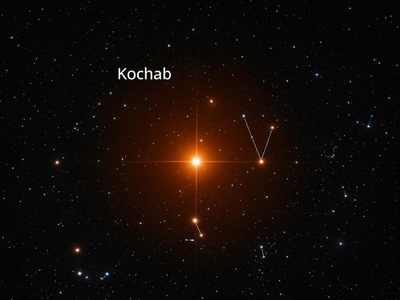
Kochab
An orange giant star in the Little Dipper’s bowl. Shining at magnitude 2.1, Kochab was the North Pole star around 1,100 BCE and is brighter than Polaris, making the Little Dipper easier to spot.
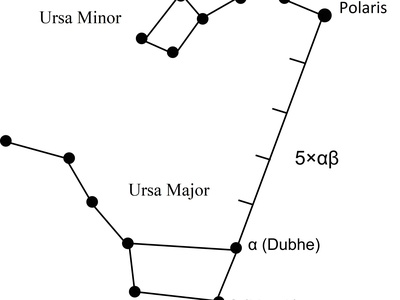
Dubhe
One of the two “pointer stars” in the Big Dipper. This magnitude 1.8 star is a binary system and, along with Merak, helps observers easily locate Polaris, the North Star.

Merak
The other “pointer star” in the Big Dipper, opposite Dubhe. Shining at magnitude 2.4, this bluish-white star is about three times the size of our Sun and relatively young at 500 million years.

Alioth
The brightest star in the Big Dipper (and Ursa Major) with a magnitude of 1.8. It is a peculiar star with a rapidly changing magnetic field, located in the handle of the dipper.
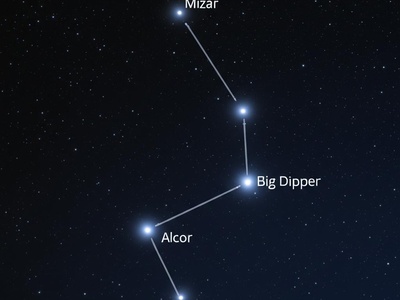
Mizar
A famous multiple-star system in the Big Dipper’s handle, shining at magnitude 2.2. A good eyesight test is to spot its faint companion, Alcor. It was the first double star discovered with a telescope.
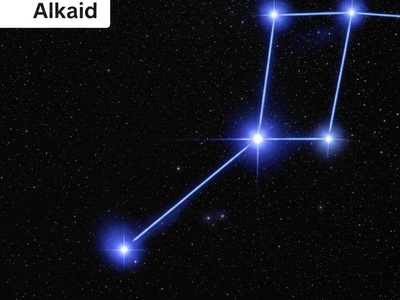
Alkaid
The star at the very tip of the Big Dipper’s handle. This hot, blue-white star shines brightly at magnitude 1.9 and is one of the hottest stars you can see with the naked eye.
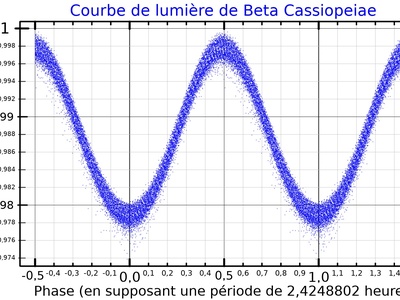
Caph
A bright, magnitude 2.3 star in the “W” shape of Cassiopeia. This white giant rotates so rapidly that it is flattened into an oblate spheroid, bulging at its equator.
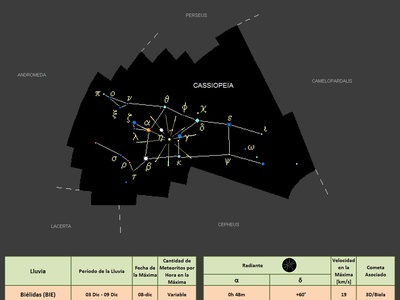
Schedar
The brightest star in Cassiopeia, Schedar is an orange giant shining at magnitude 2.2. Its deep orange hue is quite noticeable and contrasts beautifully with the other whiter stars in the constellation.

Navi
Also known as Gamma Cassiopeiae, this is the central star of Cassiopeia’s “W”. It is a highly variable star, whose brightness can change from magnitude 1.6 to 3.0 unpredictably.
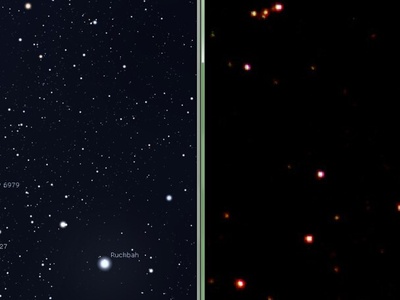
Ruchbah
The fourth-brightest star in Cassiopeia, marking the bottom right of the ‘W’. This magnitude 2.7 star is an eclipsing binary, where two stars orbit and periodically block each other’s light from our view.
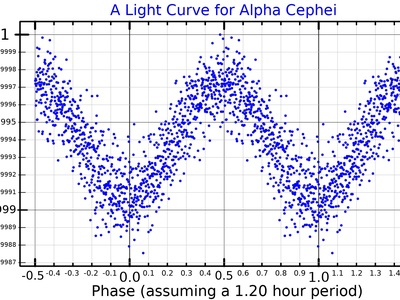
Alderamin
The brightest star in Cepheus, the King. This magnitude 2.5 white star is notable because, due to Earth’s precession, it will become the North Pole star in about 5,500 years.
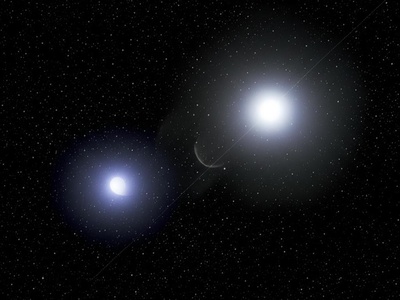
Errai
Also known as Gamma Cephei, this magnitude 3.2 binary star will become the North Star around the year 3,100 CE. In 1988, it was the first star system suspected of hosting an exoplanet.
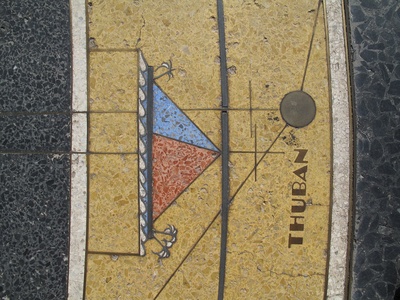
Thuban
A faint magnitude 3.7 star in the constellation Draco. Despite its dimness, it’s famous for having been the North Pole star around 3,000 BCE, during the time of the ancient Egyptians.

Eltanin
The brightest star in the constellation Draco, the Dragon. This magnitude 2.2 orange giant is known as the “zenith star” for London, as it passes almost directly overhead there.

Capella
The brightest star in Auriga and the sixth-brightest in the night sky. Shining at magnitude 0.08, Capella is actually a system of four stars, organized as two binary pairs orbiting each other.

Vega
The brightest star in the Summer Triangle and the fifth-brightest in the sky. With a magnitude of 0.03, this brilliant blue-white star was the Earth’s North Pole star around 12,000 BCE.
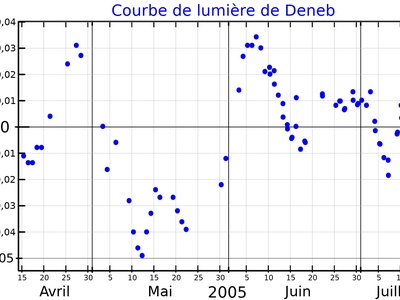
Deneb
A member of the Summer Triangle and the brightest star in Cygnus, the Swan. Deneb is an incredibly luminous blue-white supergiant, shining at magnitude 1.25 despite being about 2,600 light-years away.
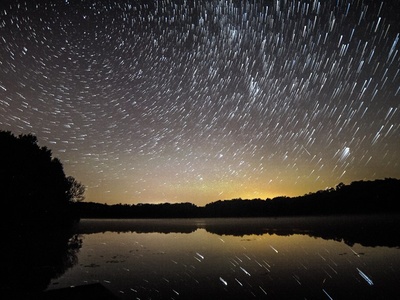
Sigma Octantis
The current South Pole Star, also known as Polaris Australis. It is very faint, with a magnitude of 5.5, making it a challenging navigational guide compared to its northern counterpart.
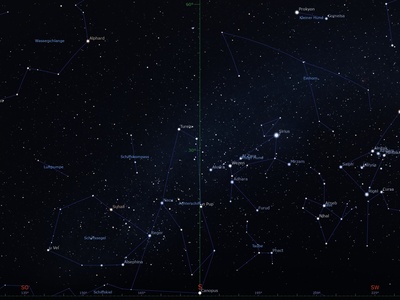
Canopus
The second-brightest star in the night sky, with a stunning magnitude of -0.74. This brilliant white supergiant is a prominent beacon in the southern sky, part of the constellation Carina, the Ship’s Keel.
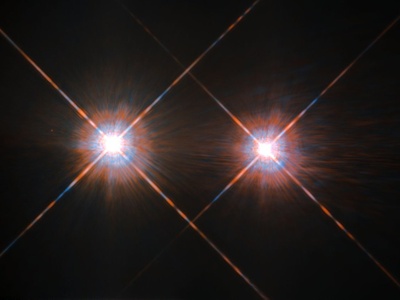
Alpha Centauri
The closest star system to our Sun. As the third-brightest star in the sky (magnitude -0.27), this is actually a triple-star system which includes our nearest stellar neighbor, Proxima Centauri.
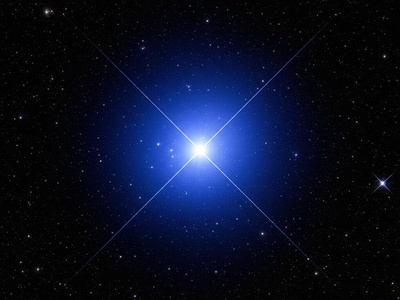
Hadar
Also called Beta Centauri, it’s the 11th brightest star in the sky at magnitude 0.61. This blue-white giant is one of the two “Pointers” to the Southern Cross, along with Alpha Centauri.

Acrux
The brightest star in the iconic Southern Cross constellation. Shining at a combined magnitude of 0.76, Acrux is a beautiful multiple-star system that appears as a single brilliant point to the naked eye.

Gacrux
The top star of the Southern Cross. It is a striking red giant star with a magnitude of 1.6, providing a beautiful color contrast with the other blue-white stars of the famous asterism.
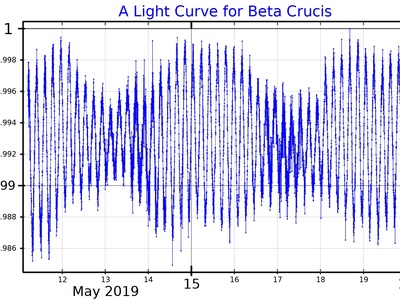
Becrux
Also called Mimosa, this is the second-brightest star in the Southern Cross. This blue giant shines at magnitude 1.25 and is one of the hottest first-magnitude stars visible in our sky.
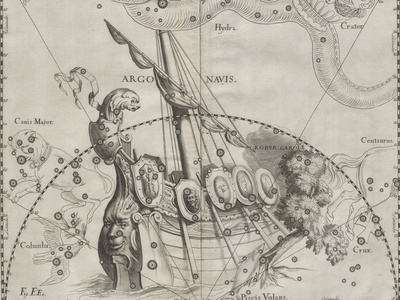
Miaplacidus
The second-brightest star in the constellation Carina. Shining at magnitude 1.7, its name means “placid waters,” a fitting title for a star in the keel of the celestial ship Argo Navis.
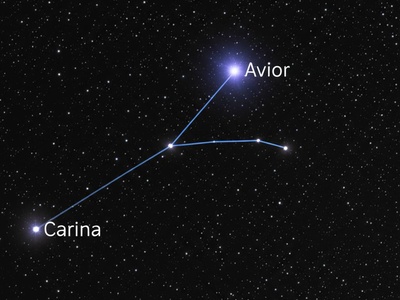
Avior
A prominent magnitude 1.9 star in the southern constellation of Carina. It forms a bright, easily recognizable pair with the star Turais, creating a landmark in the southern sky.

Achernar
The ninth-brightest star in the night sky. This brilliant blue star (magnitude 0.46) is famous for being one of the most oblate, or “flattest,” stars known due to its incredibly rapid rotation.

Peacock
The brightest star in the constellation Pavo, the Peacock. This blue-white star shines with a magnitude of 1.9 and got its modern name from Her Majesty’s Nautical Almanac office in the 1930s for navigation.
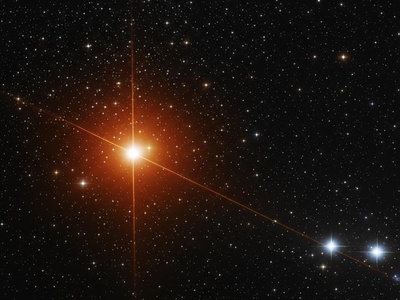
Atria
The brightest star in the Southern Triangle constellation. This orange bright giant has a magnitude of 1.9 and forms a striking, easily identifiable triangle with two other nearby stars.
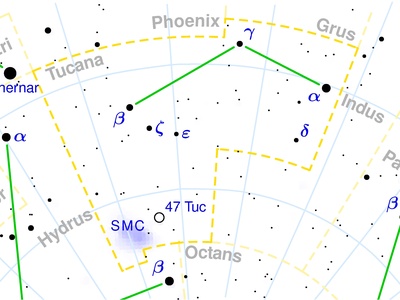
Alpha Tucanae
The brightest star in the constellation Tucana, the Toucan. This magnitude 2.8 orange giant is a binary system and sits near the famous Small Magellanic Cloud, a dwarf galaxy.

Rigil Kentaurus
The proper name for Alpha Centauri A. As the brightest component of the Alpha Centauri system and a sun-like star, it offers a glimpse into what a nearby solar system might look like.
Enjoyed this article?
Get daily 10-minute PDFs about astronomy to read before bed!
Sign up for our upcoming micro-learning service where you will learn something new about space and beyond every day while winding down.

